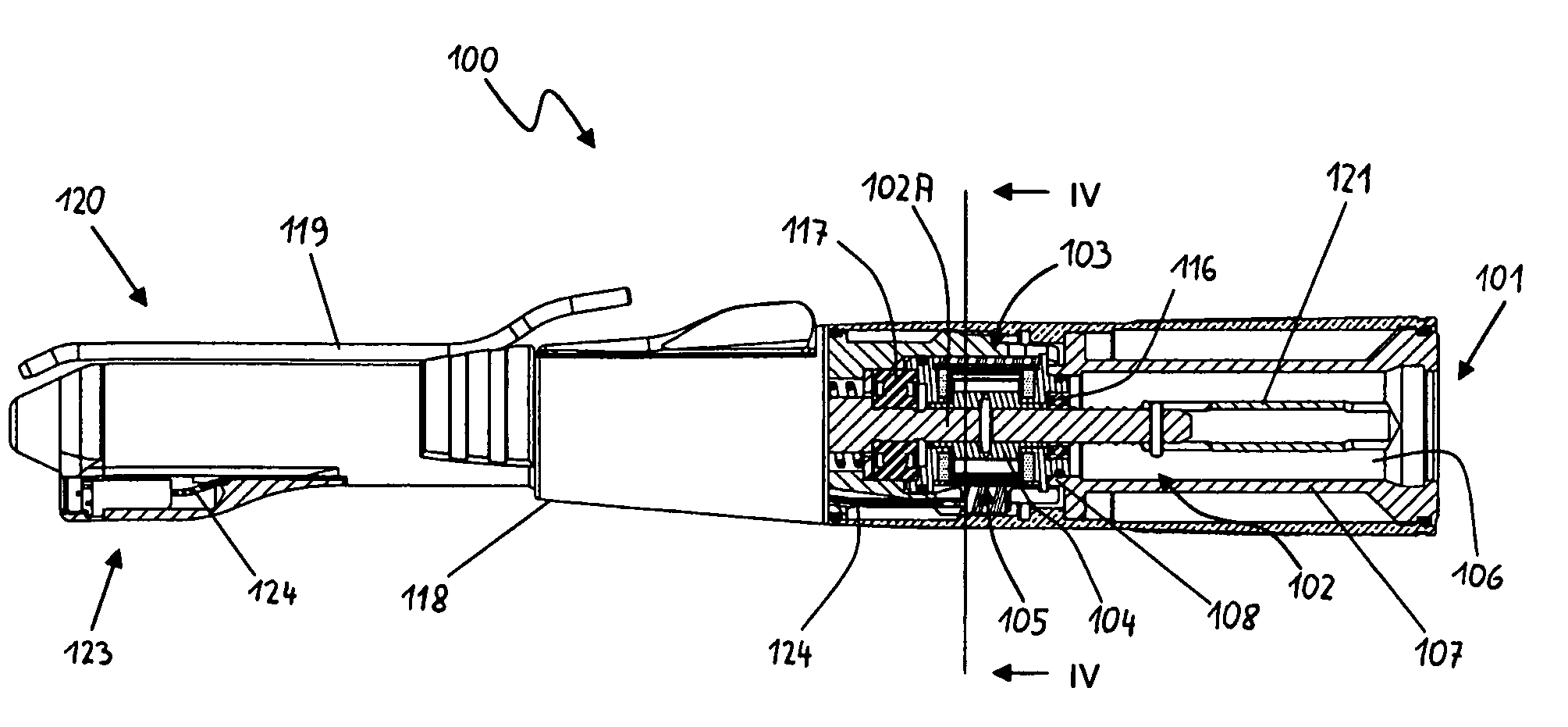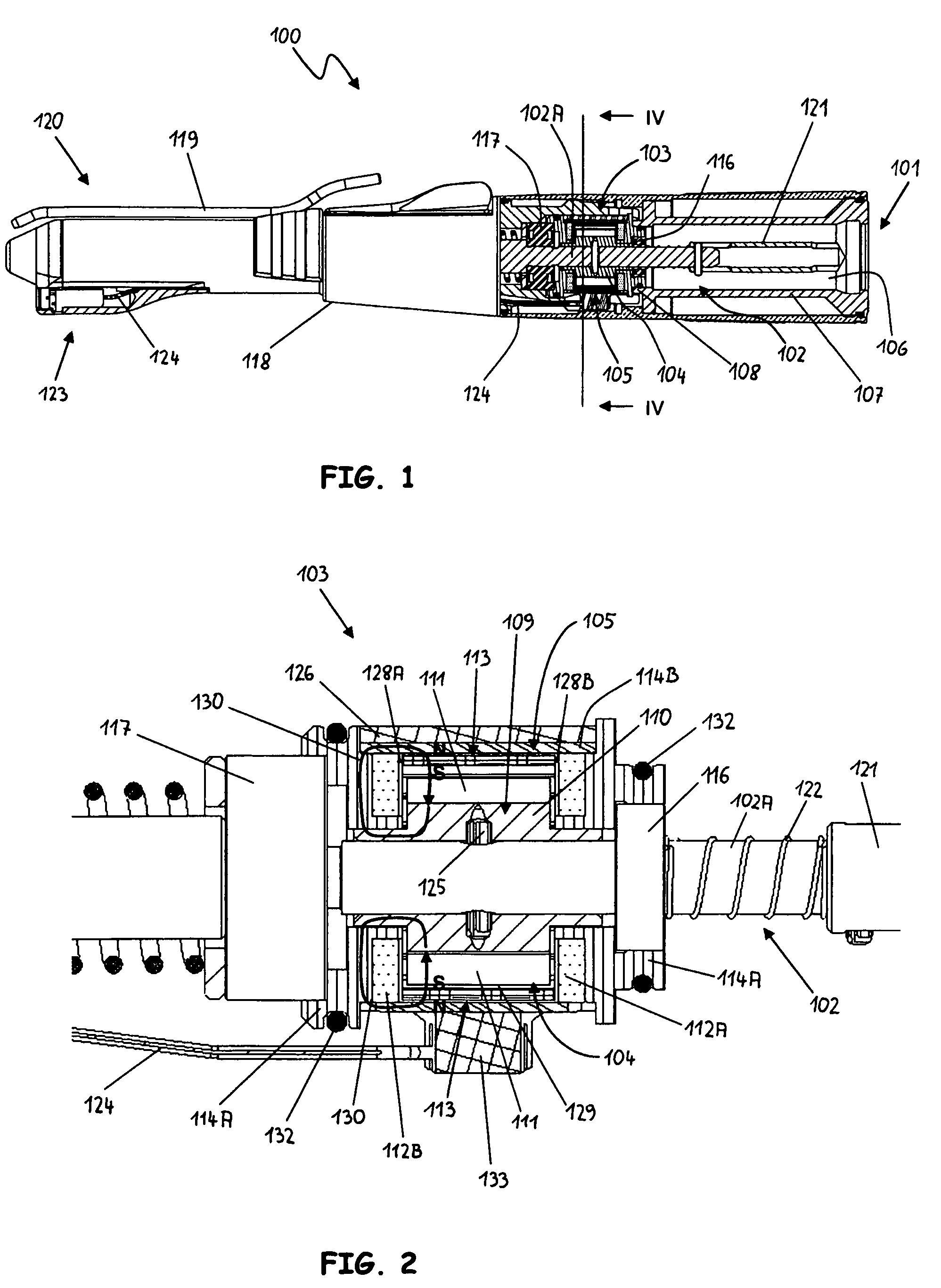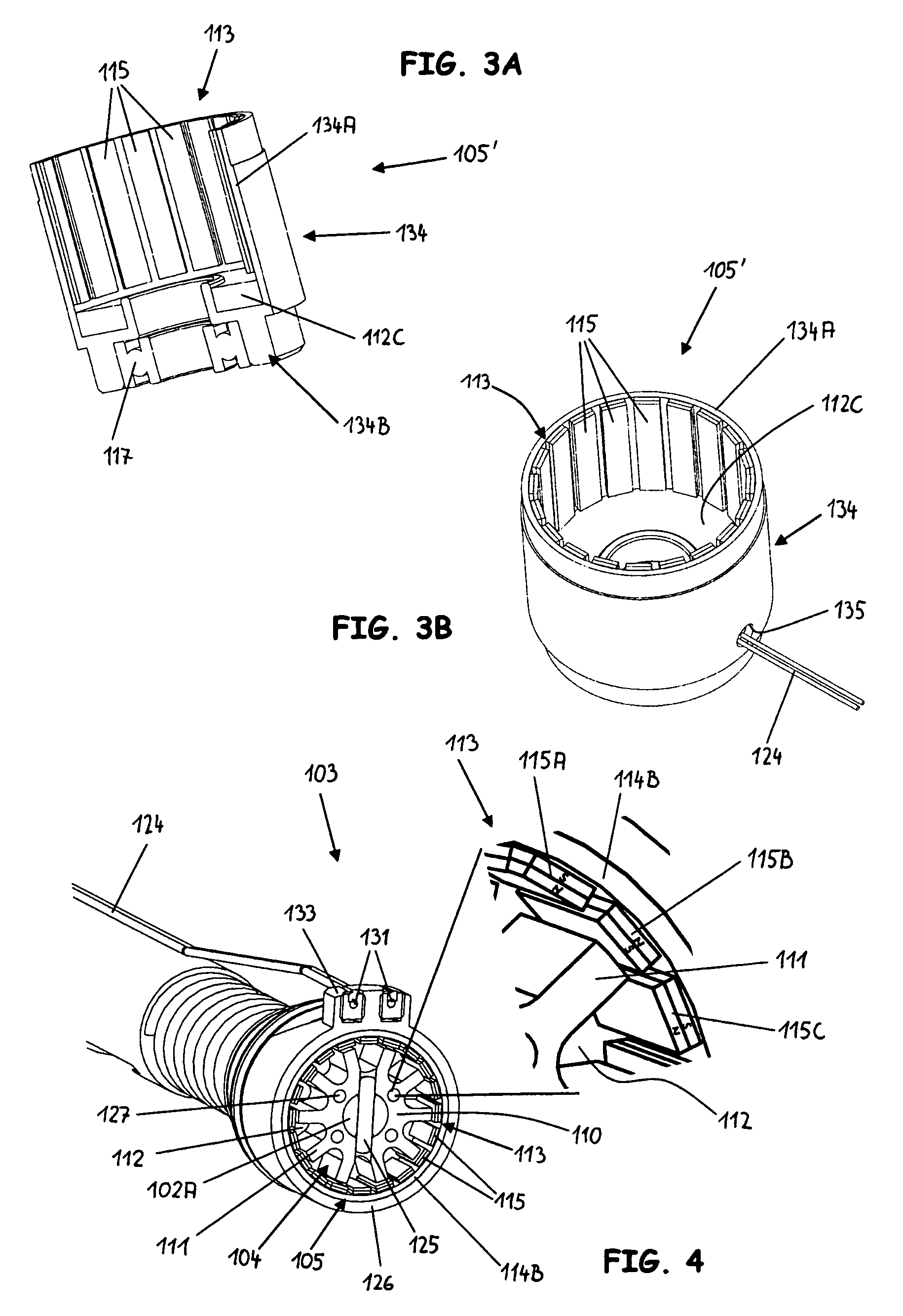Medical or dental hand-piece element
a technology of hand-piece elements and medical devices, which is applied in the field of medical devices or dental hand-piece elements, can solve the problems of inability to drive a generator, constant changes in power output of the generator, and affecting the subjective color perception of users, so as to achieve the effect of reducing the power loss of the generator, reducing the heating of the generator and the hand-piece element, and simple and inexpensive production
- Summary
- Abstract
- Description
- Claims
- Application Information
AI Technical Summary
Benefits of technology
Problems solved by technology
Method used
Image
Examples
Embodiment Construction
[0050]The medical hand-piece element 100 shown in FIG. 1 is designed for surgical applications, in particular dental-surgical applications. It comprises a straight, elongated body having a one-piece or multi-piece outer sleeve 118. A tube 119 which is attached to the outer sleeve 118 can be connected to a fluid source, so that the fluid for cooling and rinsing the treatment site can be dispensed through the tube. The surgical hand-piece element may of course have different external shapes, in particular sections arranged at an angle to one another or a pistol shape.
[0051]A tool receptacle into which a treatment tool can be releasably inserted is arranged in a known manner in the distal area or head section 120 of the hand-piece element 100. The tool receptacle is connected to the drive element 102 so that a driving movement, in particular a rotational movement, can be transferred from the drive unit (not shown) to the tool receptacle. The drive element 102 comprises at least one rot...
PUM
 Login to View More
Login to View More Abstract
Description
Claims
Application Information
 Login to View More
Login to View More - R&D
- Intellectual Property
- Life Sciences
- Materials
- Tech Scout
- Unparalleled Data Quality
- Higher Quality Content
- 60% Fewer Hallucinations
Browse by: Latest US Patents, China's latest patents, Technical Efficacy Thesaurus, Application Domain, Technology Topic, Popular Technical Reports.
© 2025 PatSnap. All rights reserved.Legal|Privacy policy|Modern Slavery Act Transparency Statement|Sitemap|About US| Contact US: help@patsnap.com



